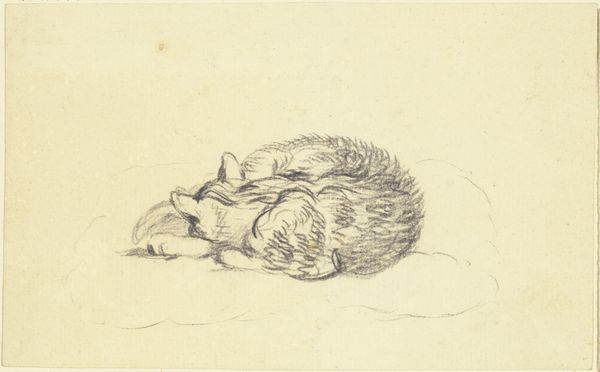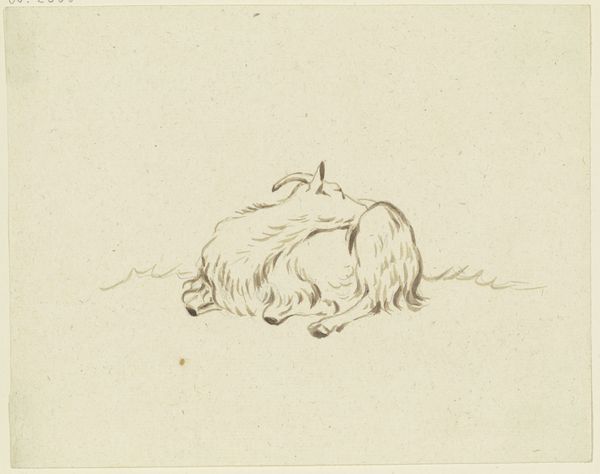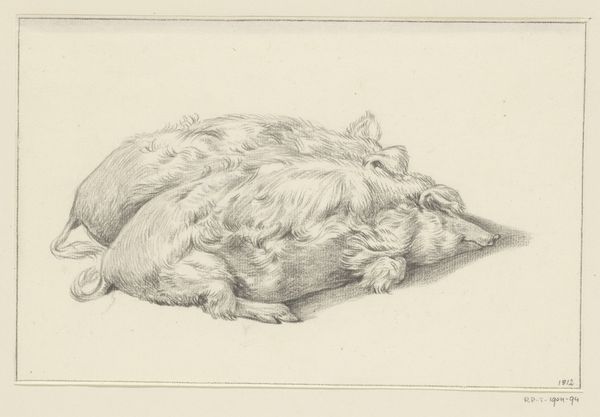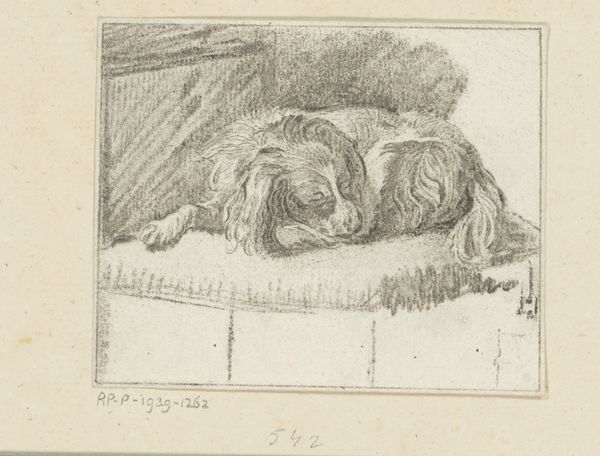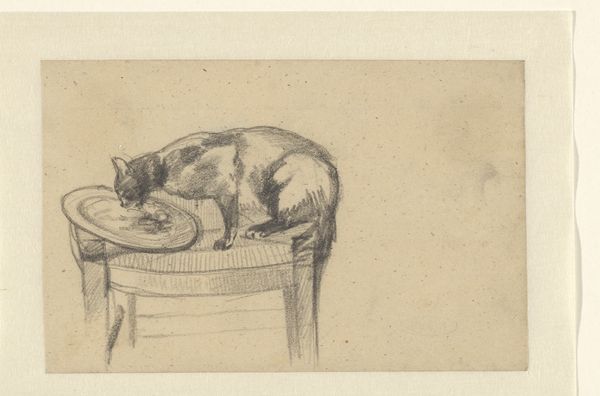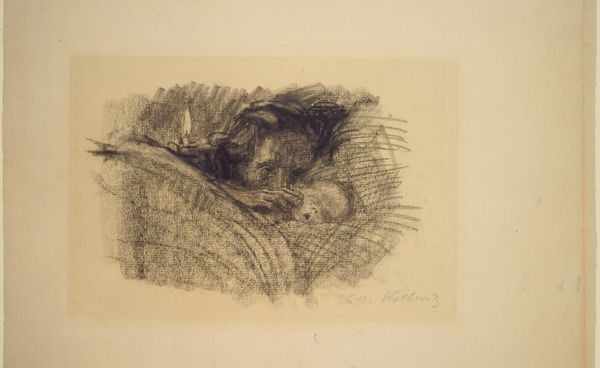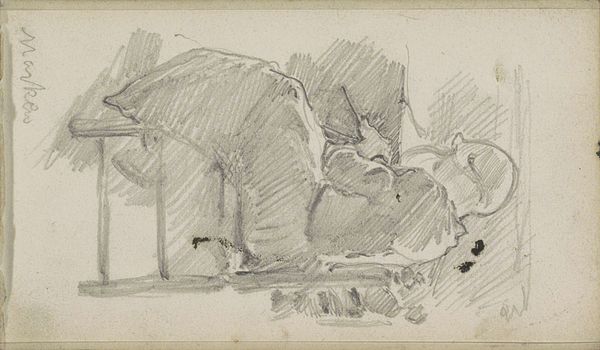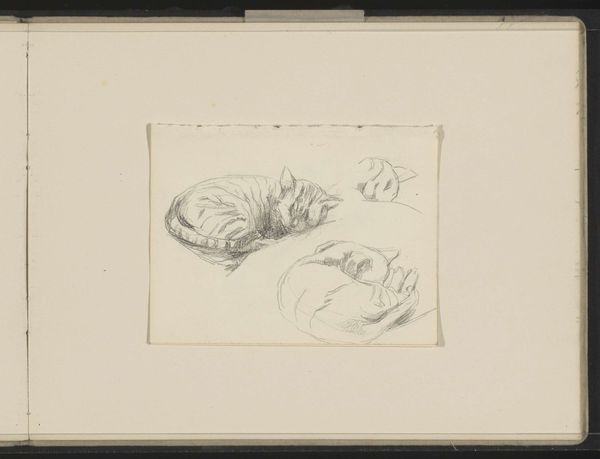
drawing, pencil
#
portrait
#
drawing
#
toned paper
#
light pencil work
#
quirky sketch
#
animal
#
pencil sketch
#
dog
#
personal sketchbook
#
ink drawing experimentation
#
romanticism
#
pen-ink sketch
#
pencil
#
sketchbook drawing
#
pencil work
#
genre-painting
#
sketchbook art
Copyright: Rijks Museum: Open Domain
Curator: I find myself drawn to this small, rather charming drawing, “Slapende hond op een voetenbank,” or “Sleeping Dog on a Footstool.” It appears to have been crafted sometime between 1816 and 1852, employing a light pencil work on toned paper. Editor: Immediately, I'm struck by the utter stillness. The composition is simple but elegant, all soft lines and gentle shading. There's a sense of quiet intimacy, a privileged glimpse into a private moment. Curator: Indeed. The application of pencil on toned paper adds another layer, softening edges, and unifying tonal values to establish harmony between light and shadow. Given the dates, it’s likely this artwork reflects burgeoning Romantic interests, depicting the domestic sphere of profile Jonkvrouw Elisabeth Kemper. Editor: The drawing, though delicate, speaks volumes about the culture that produced it. Notice the meticulous attention to detail, rendering a tangible representation of bourgeois comfort during this historical moment. Curator: The way in which even a seemingly simple subject is elevated to a formal portrait showcases the societal values that informed not just portraiture, but broader societal values—art was for everyone. A drawing like this brings "high art" closer to the common experience, making art less about aristocratic patrons and more accessible, literally rendering a "common" subject such as this dog into an artwork. Editor: And that footstool itself! It speaks volumes about status and domestic life. We might analyze its design elements in terms of line, form, and texture, how the texture of the upholstered footstool is carefully rendered with gentle lines and tonal variation, adding dimension and interest. This attention extends beyond just surface decoration—the formal values are present in everyday objects, mirroring human values from status to comfort to intimacy. Curator: Absolutely. And considering Romanticism, the intimate portrayal and attention to emotion evident through even this simple animal could indicate how artists reflected a societal shift toward private life and subjective experiences. The "sleeping dog," in its quiet composure, is also an emotive window. Editor: For me, engaging with a piece like this reminds me to slow down and notice these often-overlooked moments of stillness. And the formal beauty, rendered economically, using simple methods for subtle detail to establish a sense of peace that lingers.
Comments
No comments
Be the first to comment and join the conversation on the ultimate creative platform.
